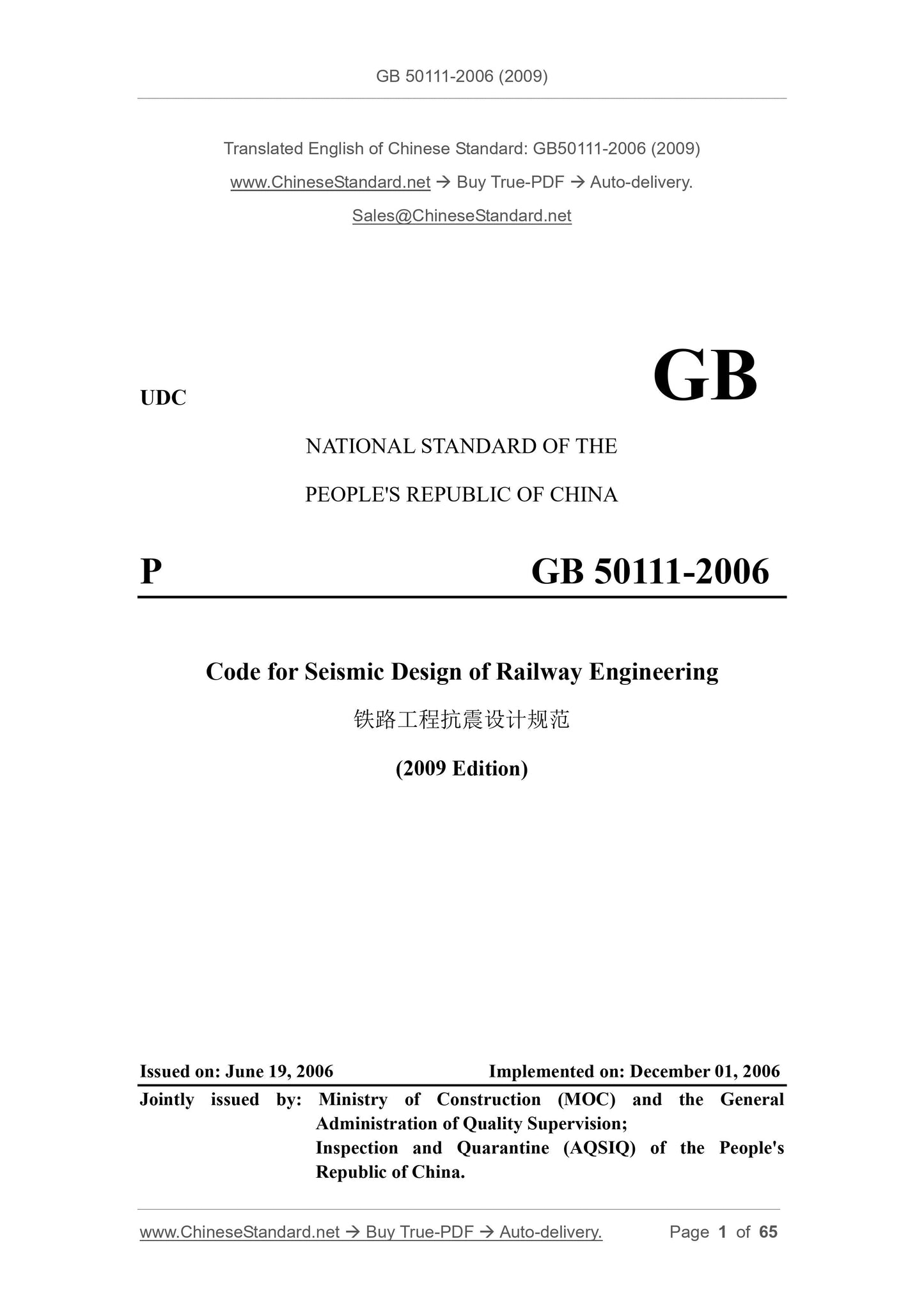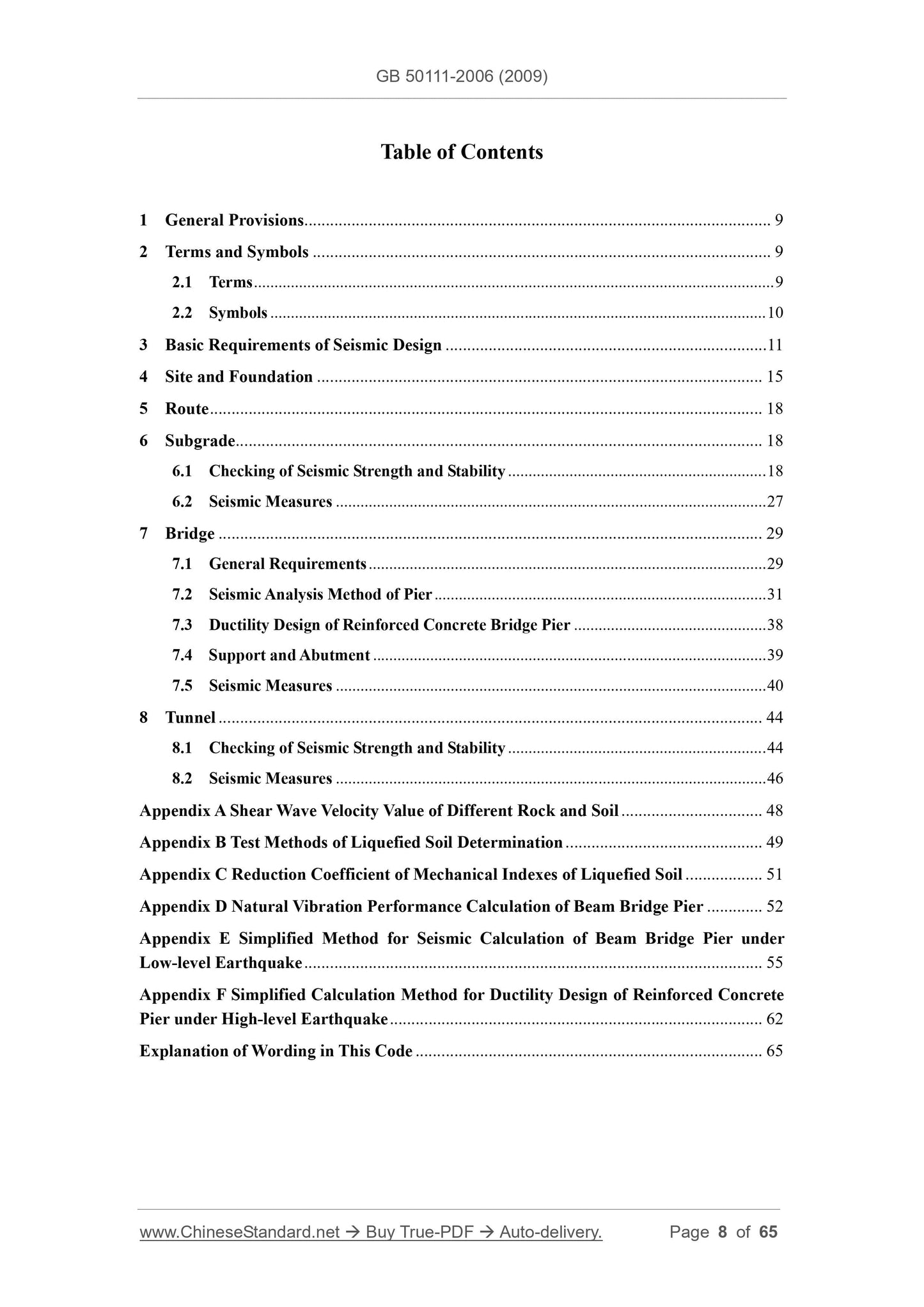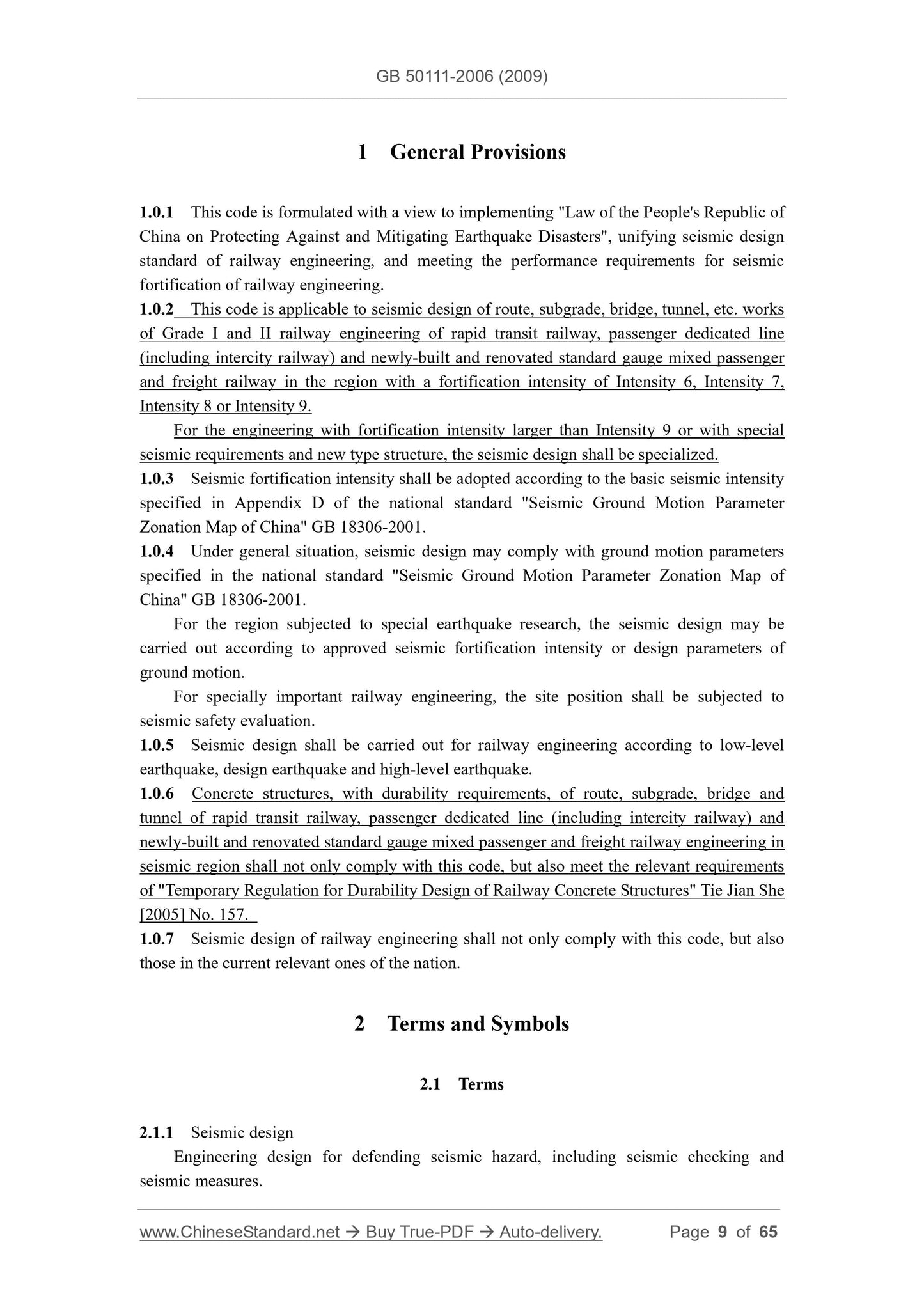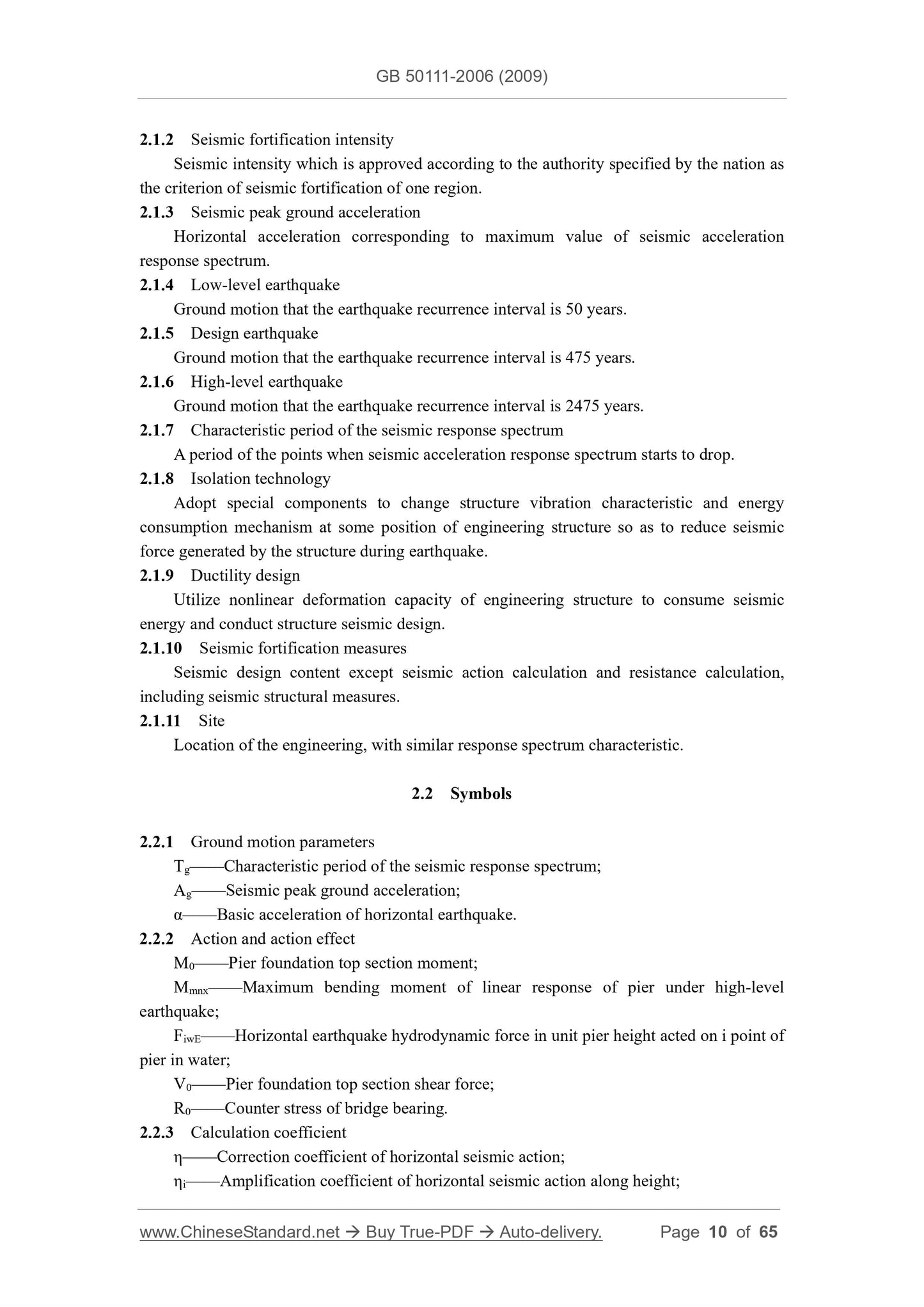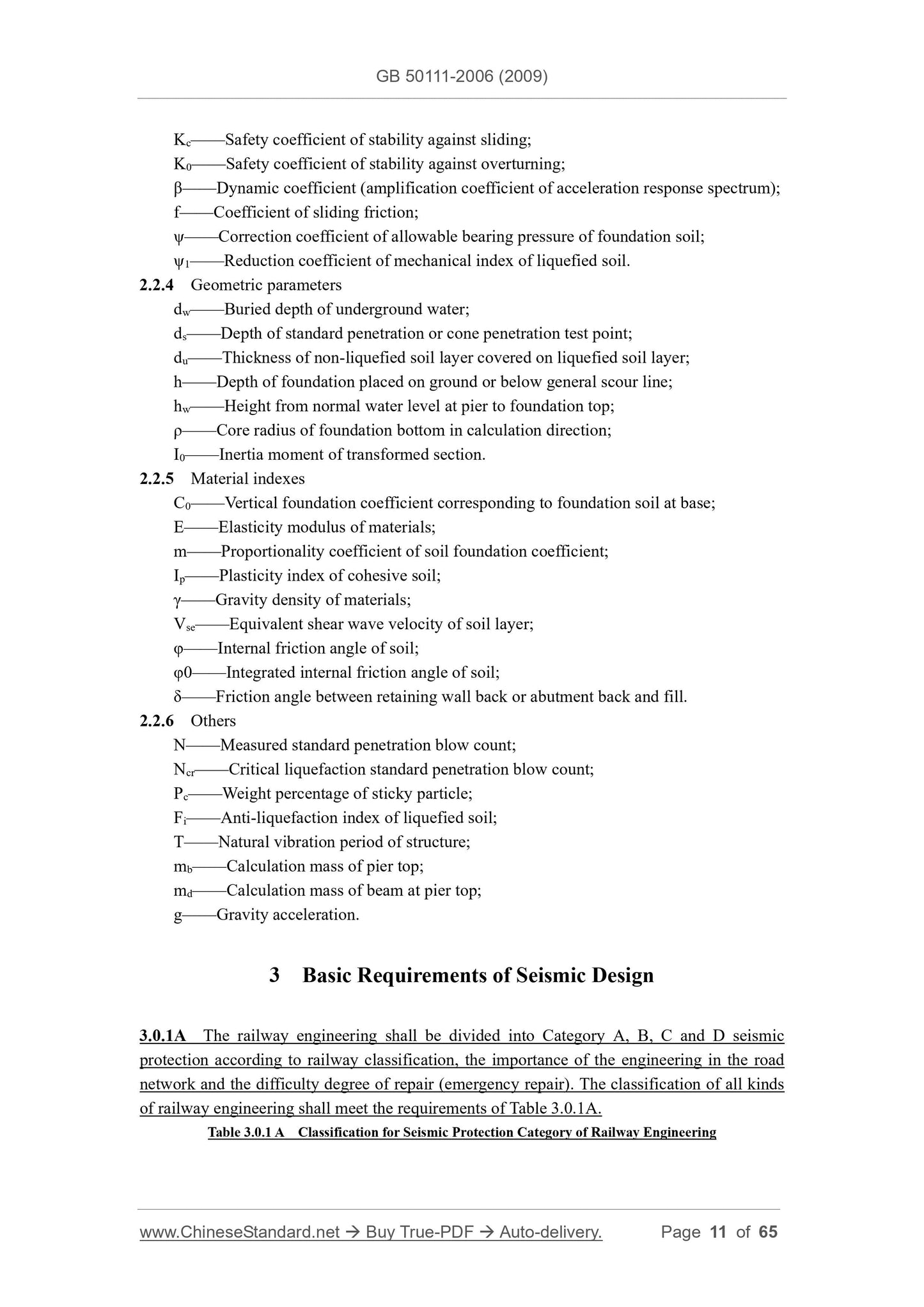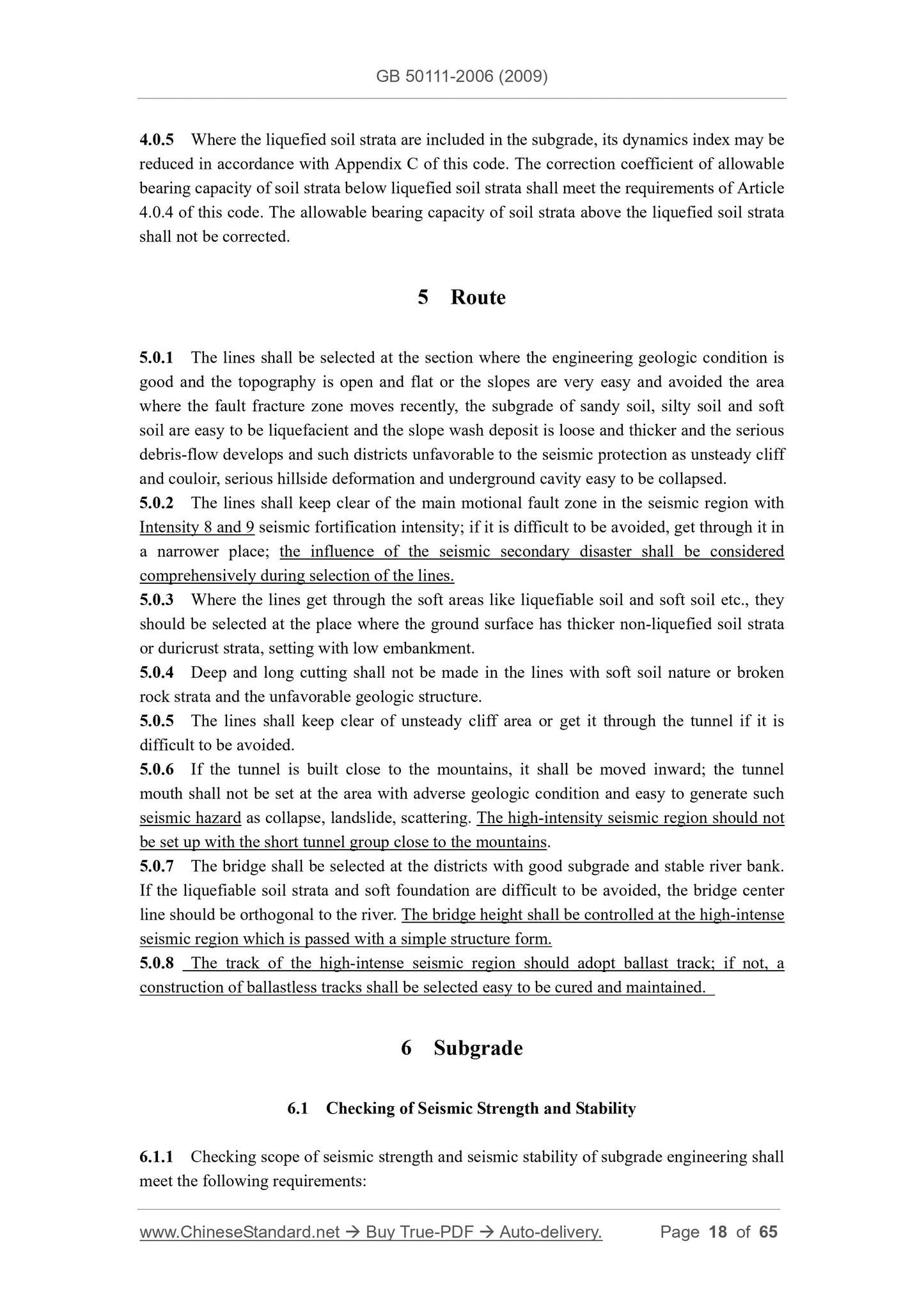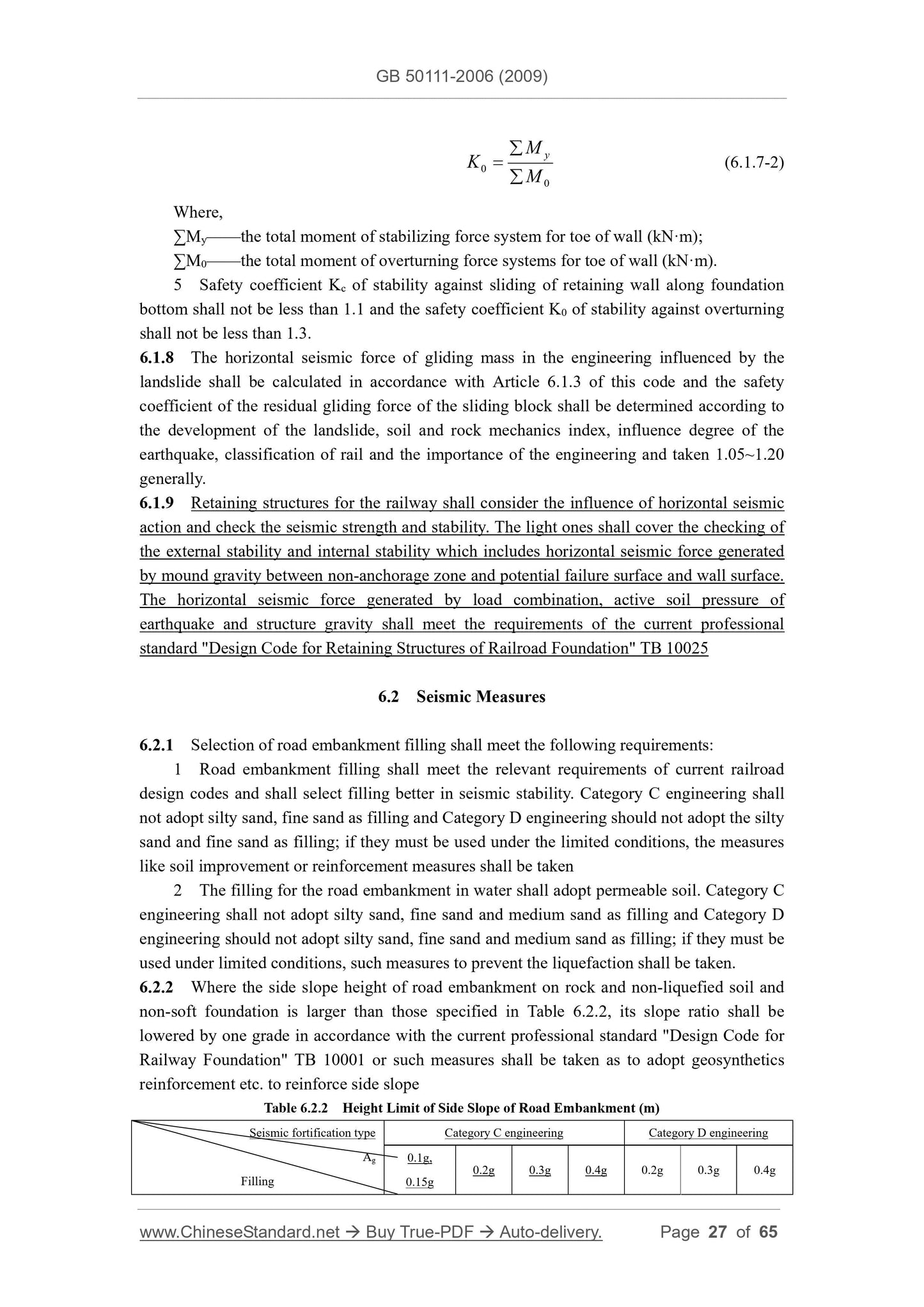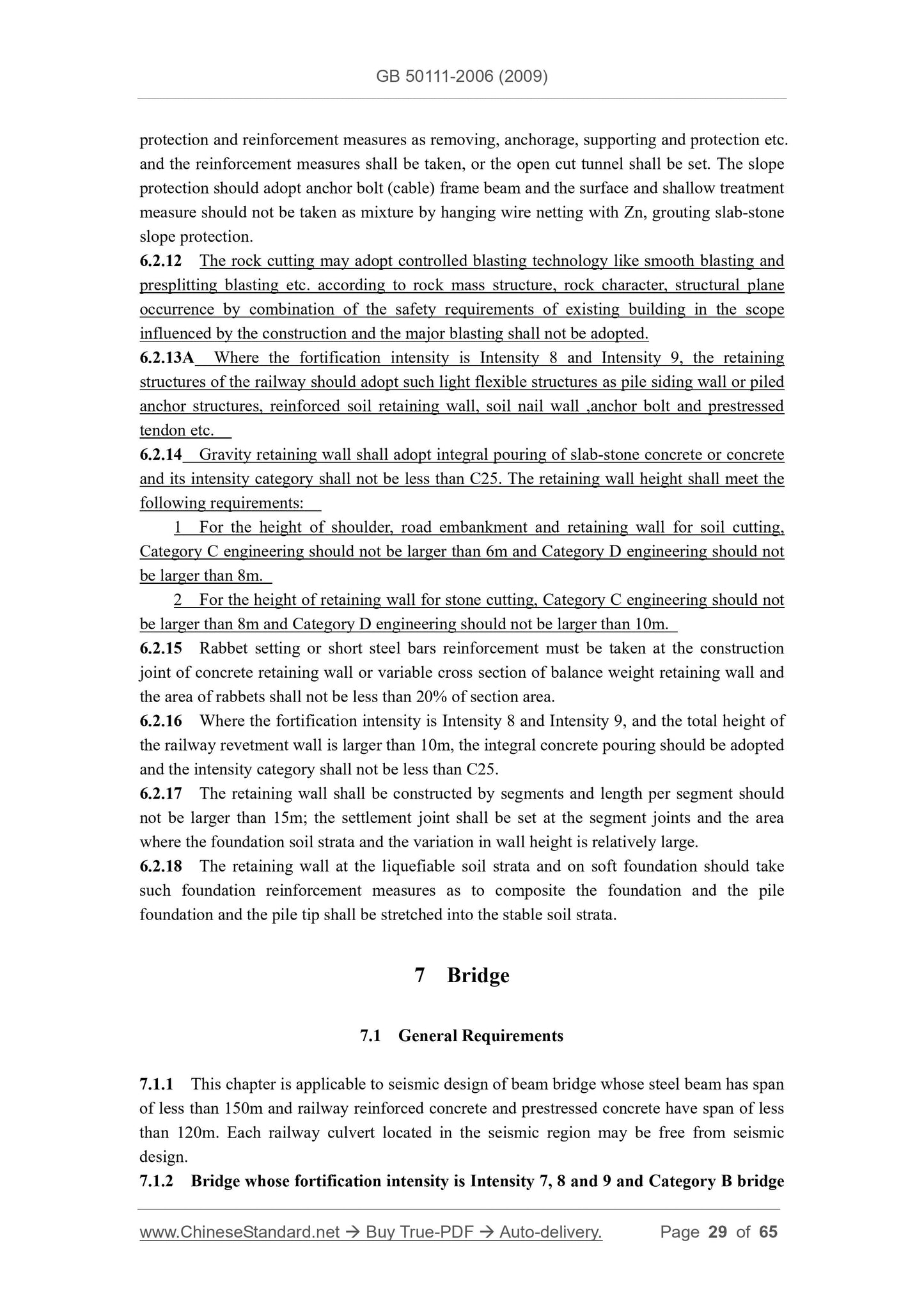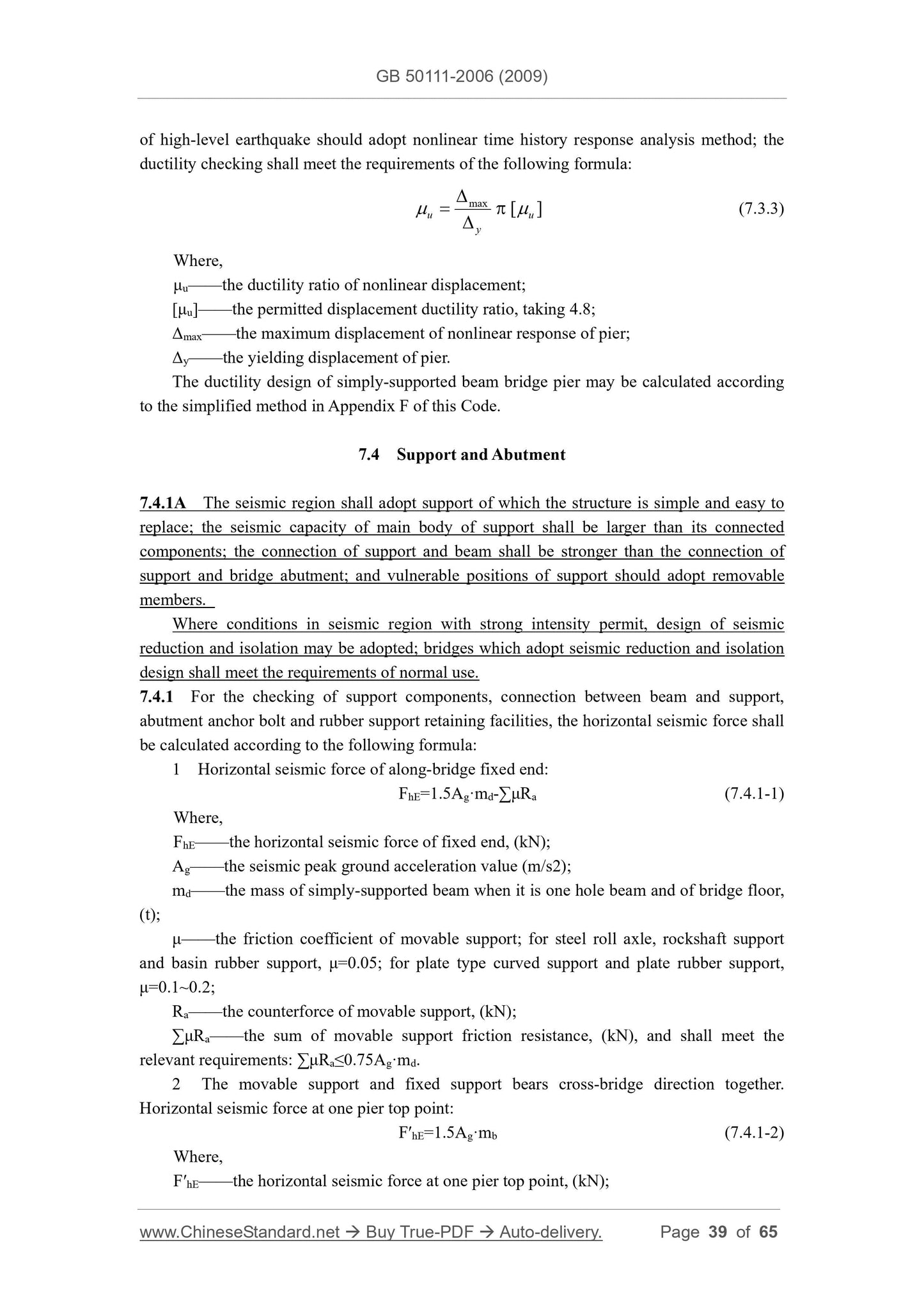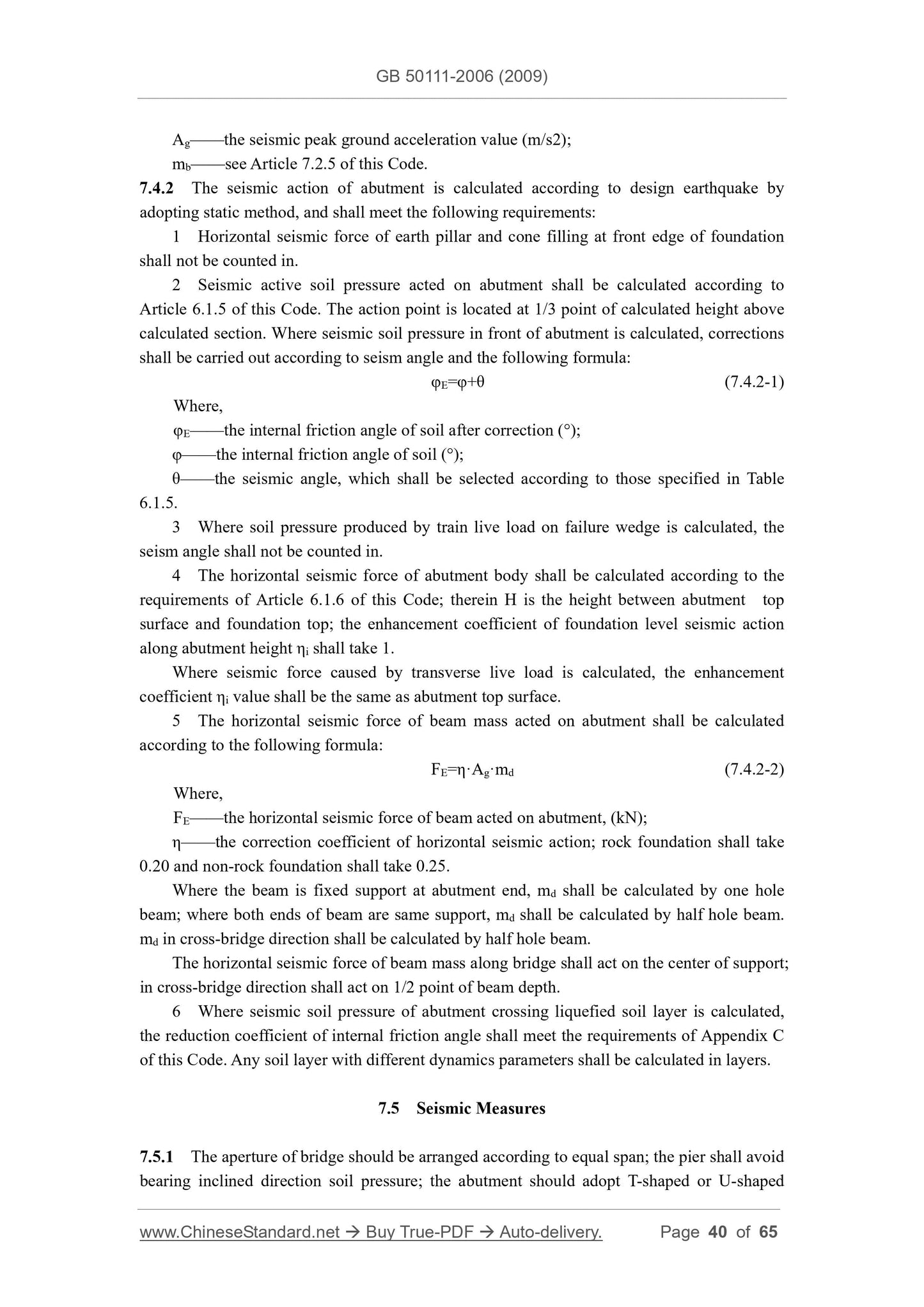1
/
of
10
www.ChineseStandard.us -- Field Test Asia Pte. Ltd.
GB 50111-2009 English PDF
GB 50111-2009 English PDF
Regular price
$205.00
Regular price
Sale price
$205.00
Unit price
/
per
Shipping calculated at checkout.
Couldn't load pickup availability
GB 50111-2009: [2009 Edition of GB 50111-2006] Code for seismic design of railway engineering
Delivery: 9 seconds. Download (and Email) true-PDF + Invoice.Get Quotation: Click GB 50111-2009 (Self-service in 1-minute)
Newer / historical versions: GB 50111-2009
Preview True-PDF
Scope
1.0.1 This code is formulated with a view to implementing "Law of the People's Republic ofChina on Protecting Against and Mitigating Earthquake Disasters", unifying seismic design
standard of railway engineering, and meeting the performance requirements for seismic
fortification of railway engineering.
1.0.2 This code is applicable to seismic design of route, subgrade, bridge, tunnel, etc. works
of Grade I and II railway engineering of rapid transit railway, passenger dedicated line
(including intercity railway) and newly-built and renovated standard gauge mixed passenger
and freight railway in the region with a fortification intensity of Intensity 6, Intensity 7,
Intensity 8 or Intensity 9.
For the engineering with fortification intensity larger than Intensity 9 or with special
seismic requirements and new type structure, the seismic design shall be specialized.
1.0.3 Seismic fortification intensity shall be adopted according to the basic seismic intensity
specified in Appendix D of the national standard "Seismic Ground Motion Parameter
Zonation Map of China" GB 18306-2001.
1.0.4 Under general situation, seismic design may comply with ground motion parameters
specified in the national standard "Seismic Ground Motion Parameter Zonation Map of
China" GB 18306-2001.
For the region subjected to special earthquake research, the seismic design may be
carried out according to approved seismic fortification intensity or design parameters of
ground motion.
For specially important railway engineering, the site position shall be subjected to
seismic safety evaluation.
1.0.5 Seismic design shall be carried out for railway engineering according to low-level
earthquake, design earthquake and high-level earthquake.
1.0.6 Concrete structures, with durability requirements, of route, subgrade, bridge and
tunnel of rapid transit railway, passenger dedicated line (including intercity railway) and
newly-built and renovated standard gauge mixed passenger and freight railway engineering in
seismic region shall not only comply with this code, but also meet the relevant requirements
of "Temporary Regulation for Durability Design of Railway Concrete Structures" Tie Jian She
[2005] No. 157.
1.0.7 Seismic design of railway engineering shall not only comply with this code, but also
those in the current relevant ones of the nation.
Basic Data
| Standard ID | GB 50111-2009 (GB50111-2009) |
| Description (Translated English) | [2009 Edition of GB 50111-2006] Code for seismic design of railway engineering |
| Sector / Industry | National Standard |
| Classification of Chinese Standard | P15 |
| Word Count Estimation | 56,534 |
| Issuing agency(ies) | Ministry of Housing and Urban-Rural Development of the People's Republic of China; General Administration of Quality Supervision, Inspection and Quarantine of the People's Republic of China |
Share
